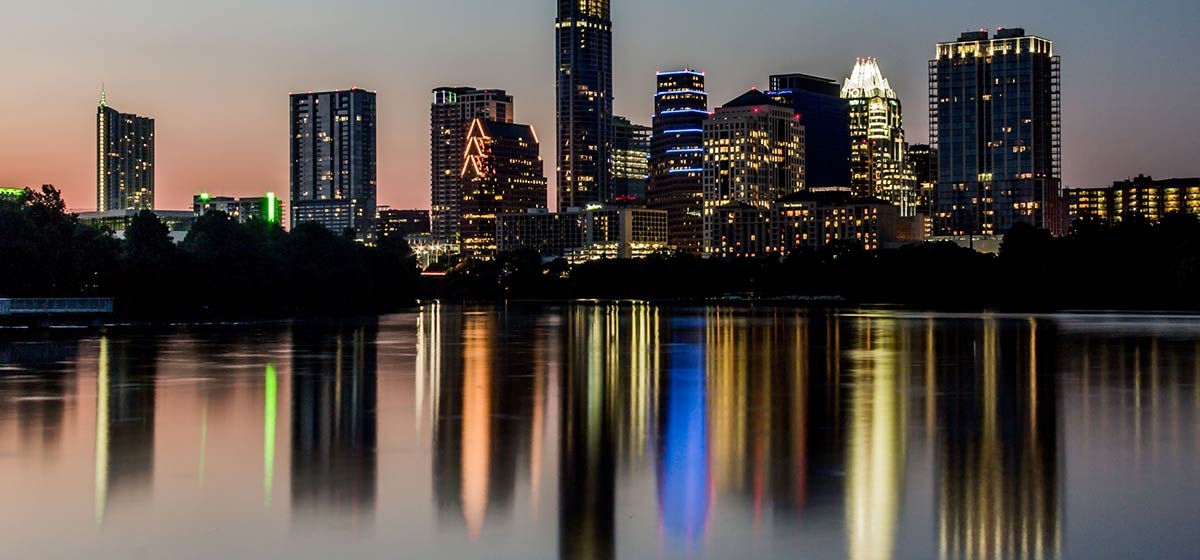Examining Austin as a Boomtown—Lessons for Pittsburgh?

Today’s high in Austin is 104 degrees, with 106 predicted for tomorrow. Even the native Texans, proud and defensive of the State’s hardships, are complaining. It has become a standard topic of conversation between strangers in elevators and in bars. And still the masses make their way here.
Sit in traffic—which we do a lot of these days in Austin—and there are always out-of-state license plates nearby. The cars from California, which seem to comprise the overwhelming number, are big and expensive Japanese or European luxury vehicles. Those from the Midwest or neighboring states such as Louisiana or New Mexico are usually smaller American or Korean sedans.
As any astute consumer of national news already knows, metro Austin is the fastest growing large city in the country with over 100 new residents every day. Many are refugee Texans from larger, even more sprawling Texas cities. But just as many seem to be from the rest of the country as well as the rest of the world.
Like any city with a very large, renowned university, Austin attracts the best and brightest from all over the world. That’s part of Texas’s and America’s promise: come here, work hard and you’ll get rich. And signs of “rich” are all over this town with one of the highest median incomes of any American city, rivaling that of our coastal competitors. Therein lies the problem for so many and the next topic of conversation among strangers: affordability. Especially housing affordability.
Flying back into Austin from Boston last week I got into a conversation with my row-mates, both of whom were from Atlanta. They remarked how Atlanta housing prices have soared. “In Alpharetta [the new, new office area 30 miles north of downtown which was cow fields when I lived in Atlanta 30 years ago] you can’t get a buildable lot for less than $300K.” Really! I remarked. What I didn’t say was the secret Southern expression “Bless your heart” because my teeny one-eighth acre lot in what’s now considered a “central Austin” neighborhood 6 miles north of downtown, is valued at $800K. I purchased the house it sits on 10 years ago for $180K. You can do the math.
Is that sustainable? Time will tell. Texans are notorious for their endless optimism and belief that this will become the greatest place on earth. So who knows?
What does this all mean? Bloomberg this week reported that America’s view of “celebrity” cities such as San Francisco and Seattle as new urban models for all others to emulate—places like Nashville and Milwaukee and Pittsburgh beware—is nothing more than a short term fad.
The intelligentsia’s love affair with a high tech and service-oriented economy is not a sustainable model for an urban agglomeration in the longer term. These new economies are as overly reliant on one “industry” as the great manufacturing towns of the 19th and early 20th centuries were. A region may have employment in silicon chip manufacturing, social media software development, artificial intelligence startups, and consumer products Web development, along with the attendant service firms such as high-end personal training studios, nationally recognized restaurants, award winning Bourbon bars, and four and five star hotels of the jet-setting cognoscenti. But that doesn’t mean the economy is diversified. Far from it.
All these enterprises are chasing the same dream. Creative destruction is a mantra among the Sand Hill Road crowd and their wannabee followers worldwide. All things must pass and what happens when there is the inevitable destruction of the current “new” economy model? To paraphrase the Bloomberg piece, $15 per cocktail Bourbon bars depend on folks with the belief in a future income that justifies the tab.
The term “boom town” always carried a slightly derogatory tone for a reason. California had its gold rush towns. More recently, North Dakota has had its oil-boom towns. Sure, Austin is much larger than either of those examples. And it has an historical baseline of State government and university employment. But when the reason for high growth is cited as nothing more than “high tech employment,” that sure sounds like a one industry town to me.





